Things fade and lose their appearance over the years. This is mainly due to improper care. If things have lost their brightness, do not rush to throw them away. You can refresh them by painting. This article tells you how to paint fabric at home with your own hands, and all the nuances of this process.
Types of fabrics that can be dyed
Below are fabrics that can be re-dyed:
- Nylon, can be dyed with powder paint. The fabric absorbs the dye very quickly.
- Cotton, silk, linen, wool, semi-wool, these fabrics are the most suitable for dyeing. They absorb paint easily and quickly, the color is preserved for a long time.
- PVC fabrics are used for banners and outdoor advertising. Acrylic dyes are used for its coloring.
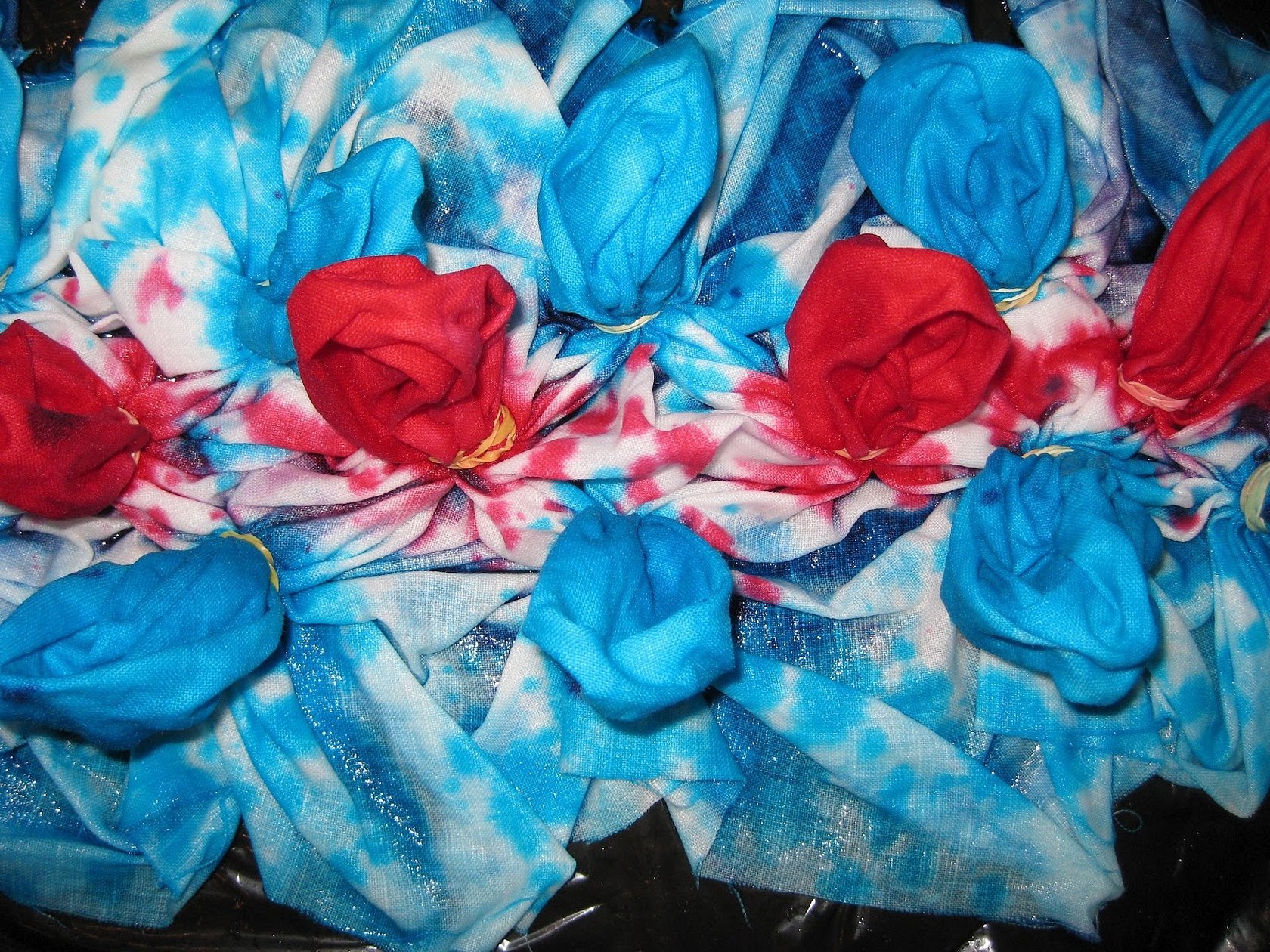
Sweaters, jumpers and other warm items are prohibited from being dyed. The pigment will not be able to penetrate evenly into the fibers, which will simply ruin the item.

Preparation of textiles
Before you start dyeing fabric at home, you need to prepare it.
There are some painting rules you need to know before you start:
- White fabrics can be dyed almost any color. But bright things and fabrics, before dyeing, first bleach and remove the pigment;
- It is important to remember that the effectiveness of dyeing depends on the composition of the fabric. The dye lays down best on cotton material;
- Before starting work, be sure to wash the items to ensure even coloring;
- To understand how much paint is needed, things are weighed and this parameter is determined;
- The dyeing of things should be done in distilled water. Ordinary running water should be additionally softened with soda.

Dyes for materials
The most popular fabric paints are acrylic and natural. They are the most affordable, and the result almost always lasts up to 20 washes. Such substances do not affect the human body, because there is no ammonia or other toxins in the composition. Needlewomen are recommended to use powder dye. It is easy to mix and control the exact amount needed for the product.
Acrylic paints
These dyes are good because they require minimal preliminary preparation. Drawing on fabric is as easy as on paper. But it is advisable to understand that in order to apply a pattern to a thing, it is necessary to use a stencil.
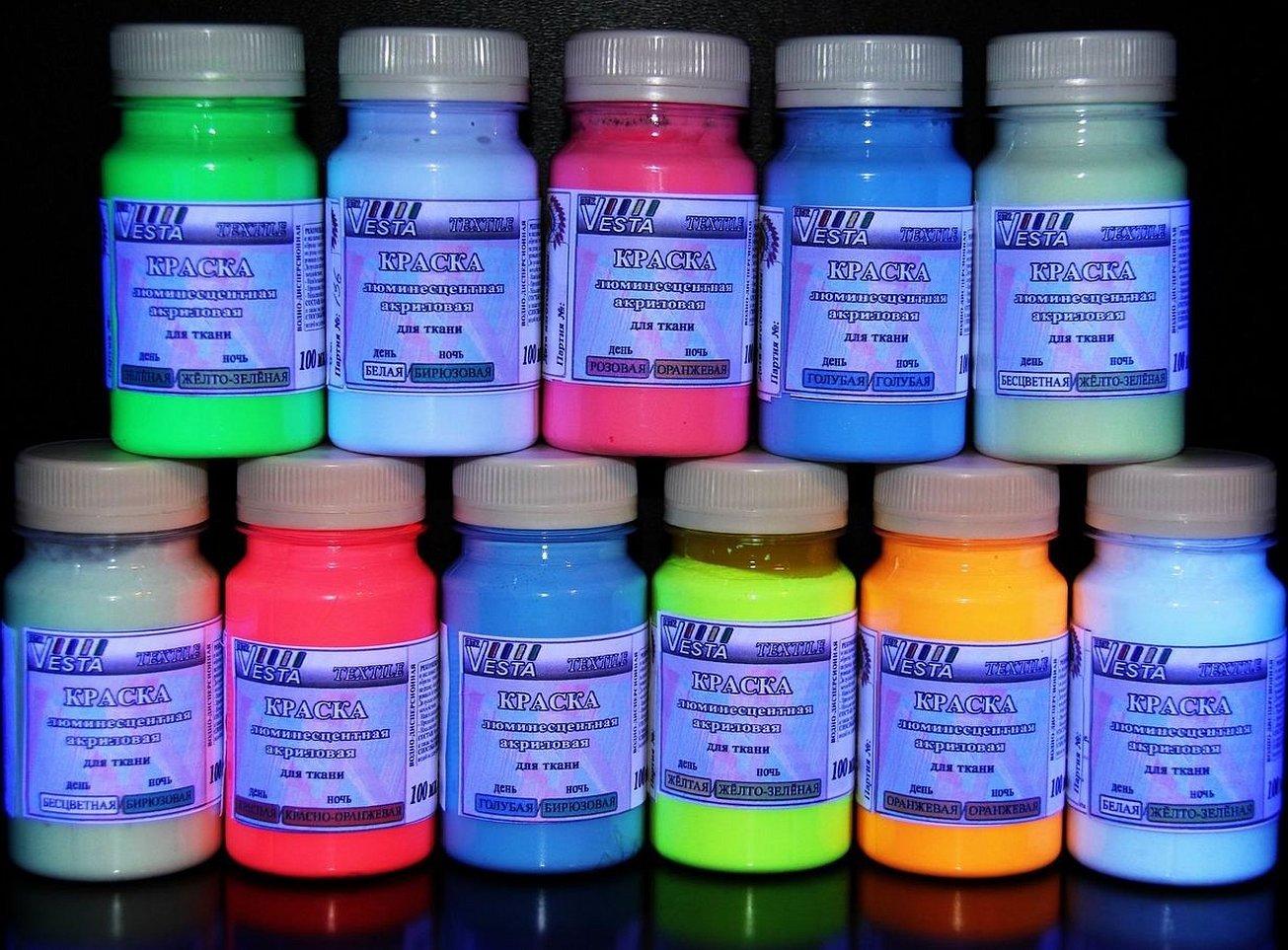
This way the drawing will be clear and without blurring along the contour.
Important! Paints can be diluted with water, but not too much, otherwise all their properties will be spoiled.
Since acrylic paints dry quickly, the can should not be kept open for more than an hour. Otherwise, all its properties will be lost. If you need to carefully outline the lines of the drawing, it is recommended to buy a special contour for clothes.
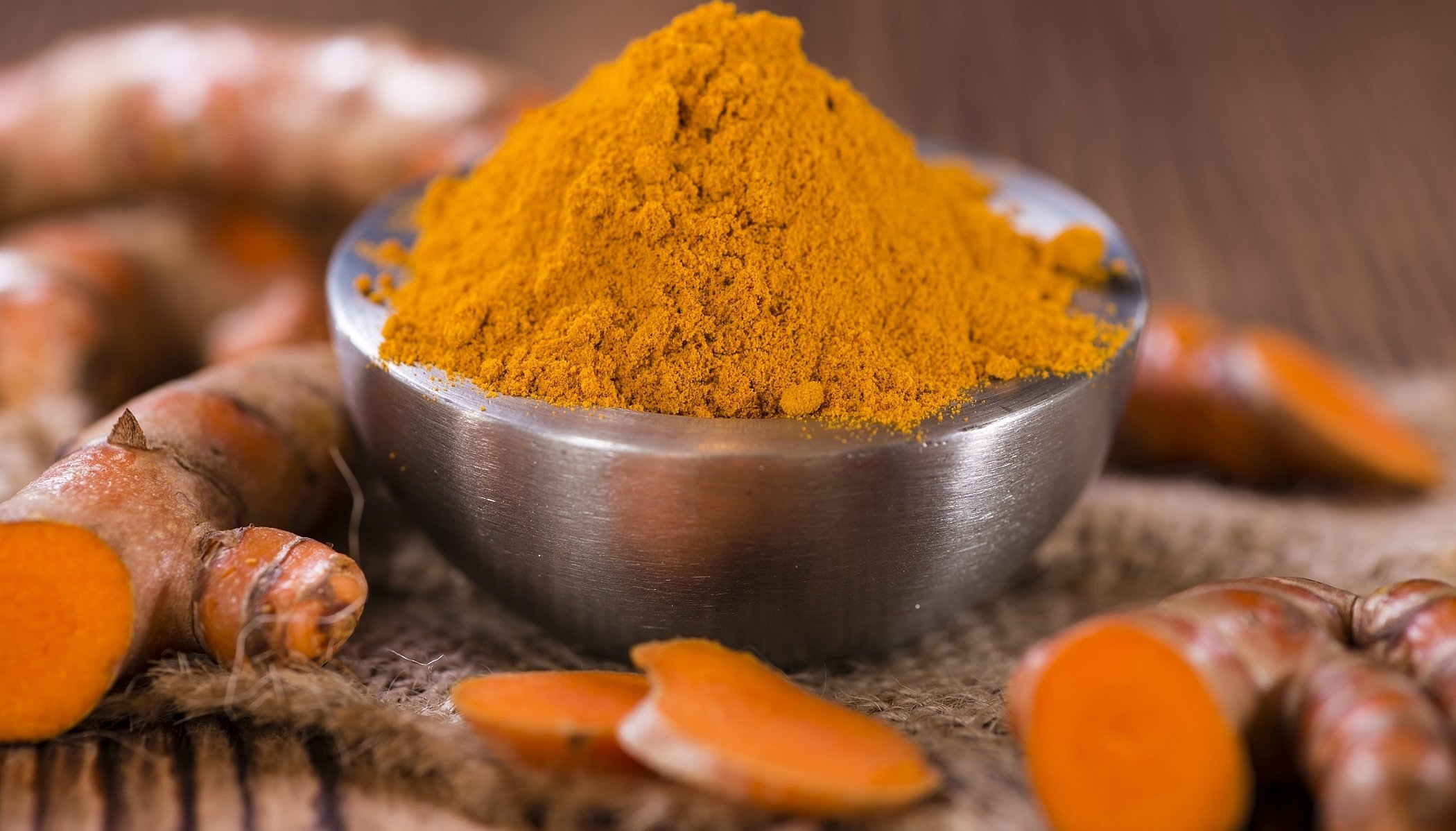
Aniline dyes
These are organic substances that are formed as a result of the oxidation of aniline. The main component, aniline, was derived from natural indigo. Scientists have managed to prove that it can be used to make bright colors. Aniline dyes are often used in production, for painting things. At home, fabric dyeing with such dyes is not done.
Natural dyes for fabrics
Natural dyes are taken from food, spices, etc. The most popular are turmeric (for yellow), barberry, buckwheat, blackberry, blueberry, etc.
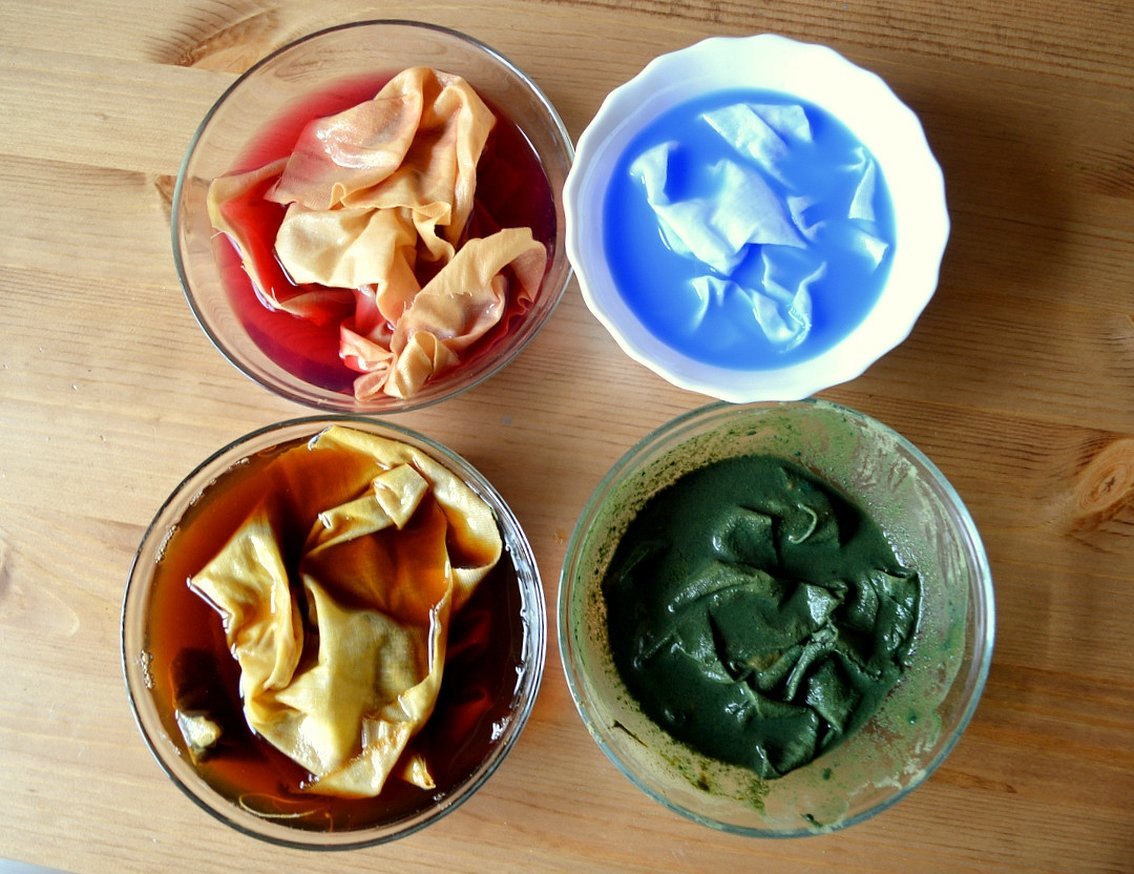
Many people use such paints because they are safe and not too expensive. But painting with such means is quite a labor-intensive process. For green color, medicinal products such as brilliant green and potassium permanganate are used. Brown and dark colors could be obtained by mixing black coffee, onion peel and tea. For blue and gray colors, currants are usually used. The entire process of boiling the fabric will take about three hours. But the color will last longer than from any purchased paint.
Folk remedies
Natural dyes include mint (for green), beetroot (for red and pink), activated carbon and other products that contain a large amount of pigment.
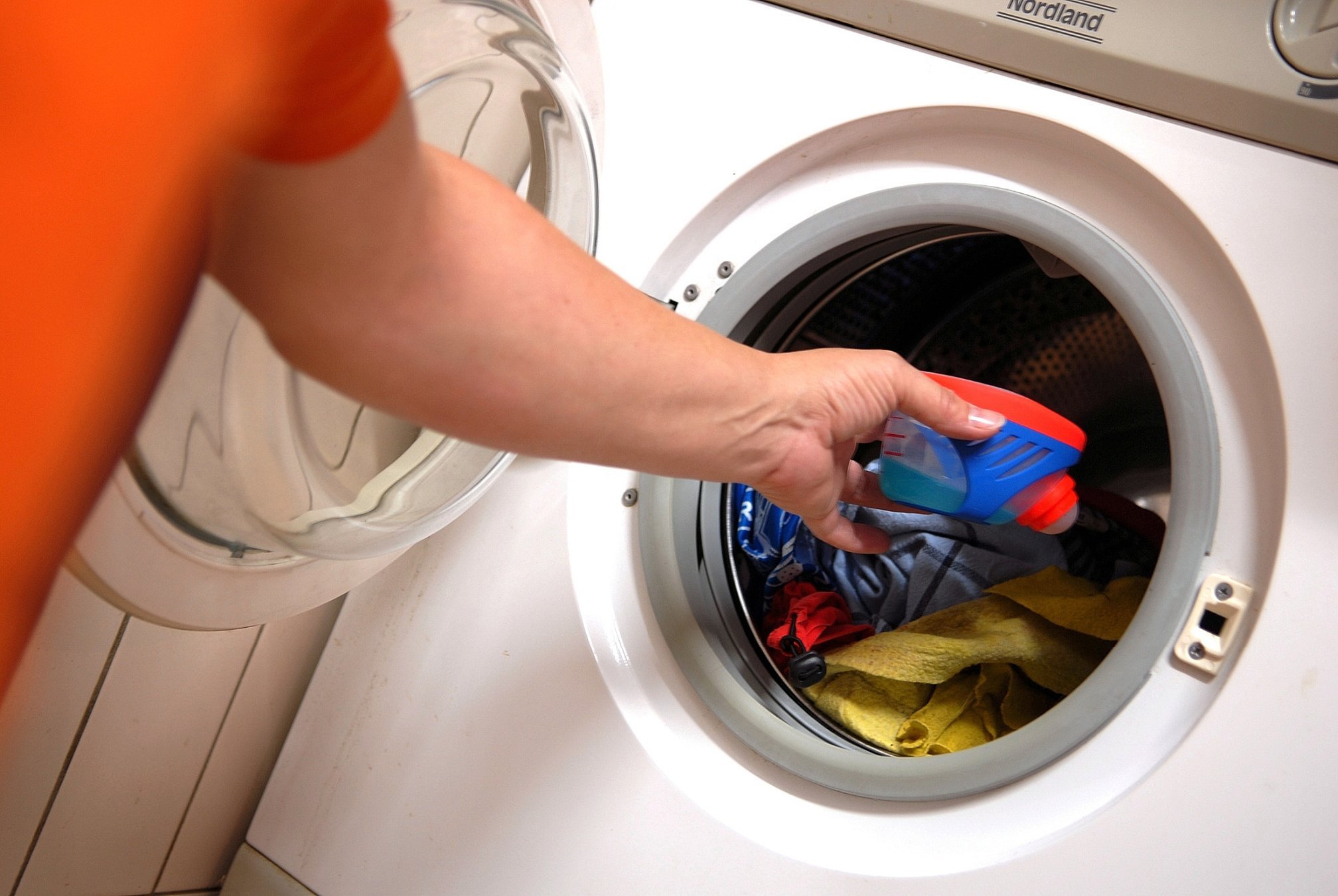
But since there is a large selection of paints for clothes in modern times, almost no one uses such recipes. Previously, many women boiled jeans or outerwear for several hours to give the product a fresh look.
Machine dyeing
Machine dyeing of fabrics takes about half an hour (linen and cotton fabrics are suitable):
- First, prepare the paint and mix it;
- Pour the coloring pigment into the compartment of the washing machine intended for powder;
- Load the items into the machine, but before doing so, wet them well;
- Set the washing temperature to 80 degrees, not lower;
- Wash for about 30 minutes;
- Rinse items by hand in cool water.
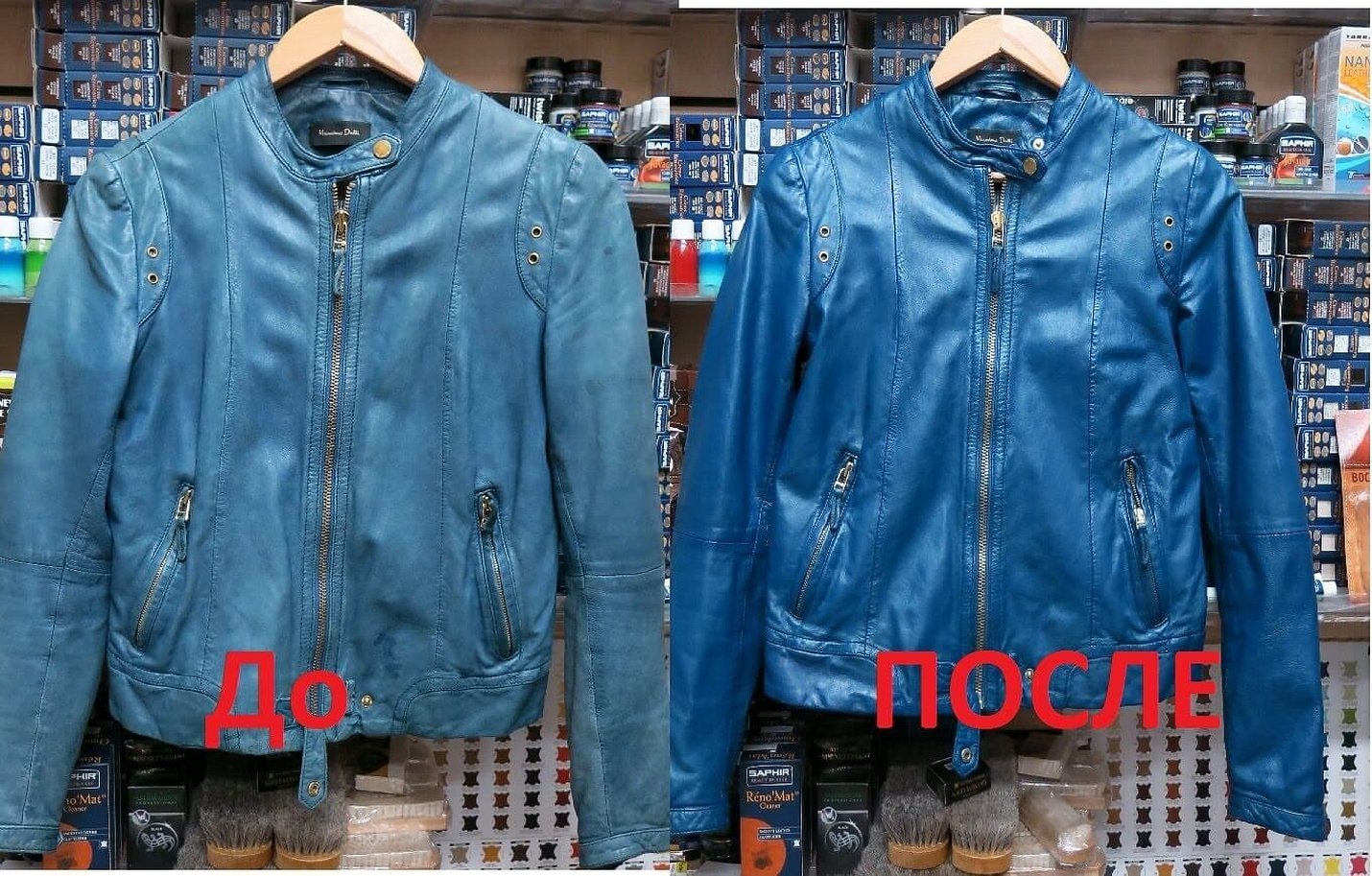
After painting, wash the machine. Otherwise, during the next wash, there is a risk of painting unnecessary things.
Is it possible to dye a bologna jacket?
Before painting the jacket, it must be soaked in hot water. This is necessary so that the paint is evenly distributed over the product. You can soak it in the bath or in a basin. After that, take the jacket out and smooth out all the creases so that the paint lies correctly. Heat water in a large saucepan, there should be a lot to completely cover the item.
Important! The jacket should float in the water so that the pigment is evenly absorbed. It is advisable to choose a very large saucepan. Boil the water over medium heat. Then pour the water into a large basin and put the jacket there.
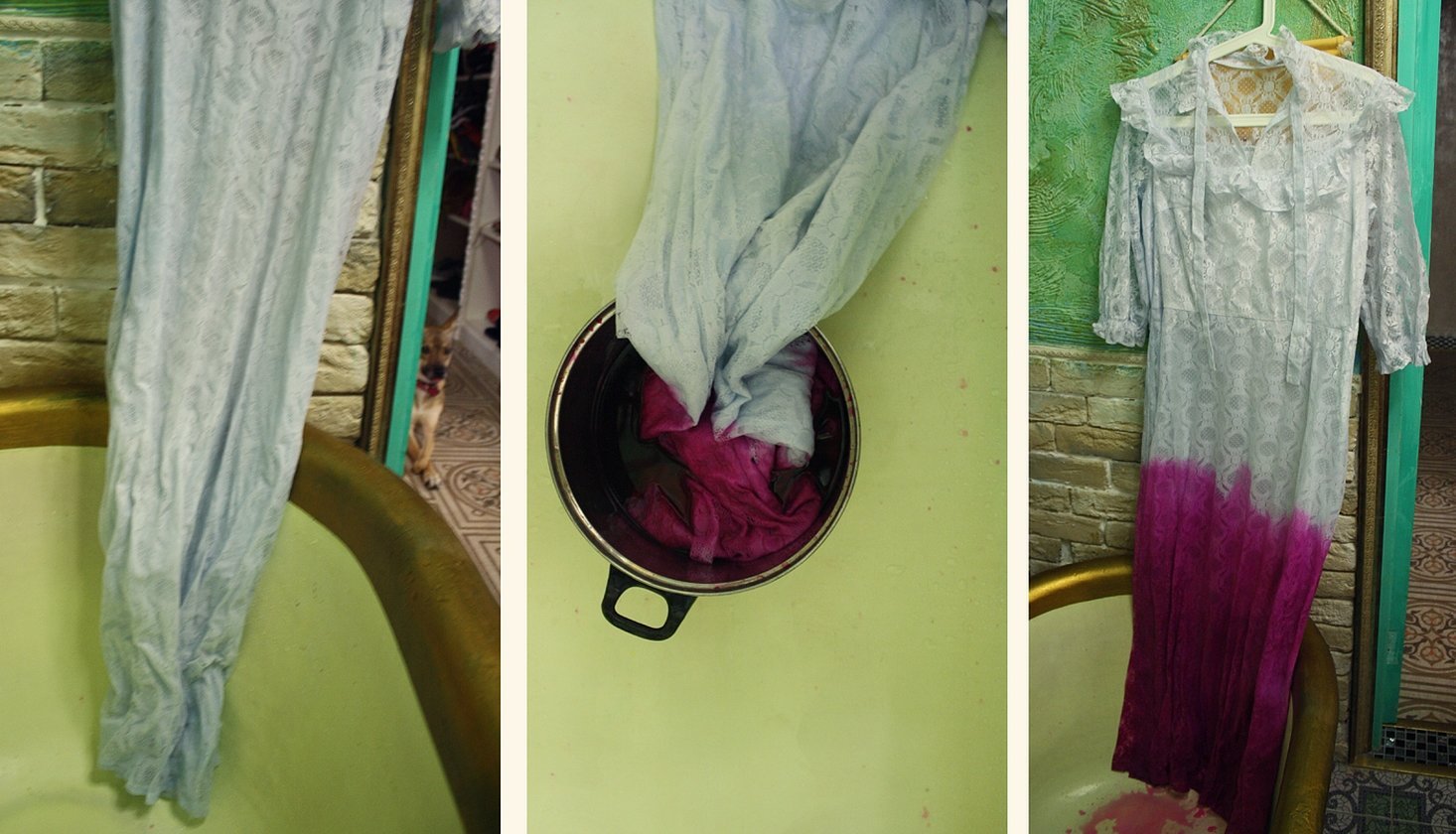
The water temperature should be about 70 degrees. Add the paint to boiling water and stir quickly. At least 10 liters of liquid are needed for one packet of pigment. For a less bright color, less water is needed. The paint is dissolved in a separate container. Pour 250 ml of boiling water over the packet of powder and stir. Even liquid dyes are first diluted with water. To make the color more saturated, you can add a spoonful of vinegar to the water. Dye the jacket for about 2 hours.
Proper care of the product after dyeing is completed
- It is prohibited to dry products in direct sunlight;
- The first 3 washes should be carried out separately from other items to avoid accidentally dyeing them;

- When rinsing, add vinegar to keep the color from washing out longer;
- Rinse only in water at room temperature;
- Do not use aggressive detergents for washing, powder is suitable for all types of fabrics;
- The first few times, dry only in a horizontal position.
In conclusion, it should be noted that dyeing fabric yourself at home is quite simple. The main thing is to pay attention to the composition of the paint before buying. The better the composition and the more famous the manufacturer, the higher the chance that the dyed product will remain bright and juicy for more than one month.
Also, after painting, it is necessary to adhere to the rules for caring for things, as a rule, the pigment begins to wash out after 10 washes. But if you are not confident in your skills, it is better to give the product to dry cleaners for painting.




